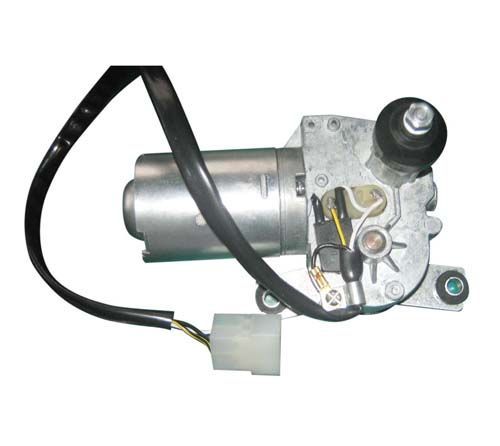


Lada 2108 rear wiper motor
NO CONTENT YET
+86-593-7877777 7877333
 Consult online now
Consult online now
Electromagnetic DC motors are composed of stator poles, rotor (armature), commutator (commonly known as commutator), brushes, casing, bearings, etc.
The stator magnetic pole (main magnetic pole) of the electromagnetic DC motor is composed of an iron core and an excitation winding. According to the different excitation methods (called excitation in the old standard), it can be divided into series-excited DC motors, shunt-excited DC motors, separately-excited DC motors and compound-excited DC motors. Due to the different excitation methods, the law of the stator magnetic pole flux (generated by the excitation coil of the stator pole is energized) is also different.
The field winding and the rotor winding of the series-excited DC motor are connected in series through the brush and the commutator. The field current is proportional to the armature current. The magnetic flux of the stator increases with the increase of the field current. The torque is similar to the electric current. The armature current is proportional to the square of the current, and the speed drops rapidly as the torque or current increases. The starting torque can reach more than 5 times the rated torque, and the short-term overload torque can reach more than 4 times the rated torque. The speed change rate is large, and the no-load speed is very high (generally not allowed to run under no-load ). Speed regulation can be achieved by connecting an external resistor in series (or in parallel) with the series winding, or switching the series winding in parallel.
The excitation winding of the shunt-excited DC motor is connected in parallel with the rotor winding, the excitation current is relatively constant, the starting torque is proportional to the armature current, and the starting current is about 2.5 times the rated current. The speed decreases slightly with the increase of current and torque, and the short-term overload torque is 1.5 times of the rated torque. The rate of speed change is small, ranging from 5% to 15%. The speed can be adjusted by weakening the constant power of the magnetic field.
The excitation winding of the separately excited DC motor is connected to an independent excitation power supply, and its excitation current is relatively constant, and the starting torque is proportional to the armature current. The speed change is also 5%~15%. The speed can be increased by weakening the magnetic field and constant power or by reducing the voltage of the rotor winding to reduce the speed.
In addition to the shunt winding on the stator magnetic poles of the compound-excited DC motor, a series winding (with fewer turns) connected in series with the rotor winding is also installed. The direction of the magnetic flux generated by the series winding is the same as that of the main winding. The starting torque is about 4 times the rated torque, and the short-term overload torque is about 3.5 times the rated torque. The speed change rate is 25%~30% (related to series winding). The speed can be adjusted by weakening the magnetic field strength.
The commutator segments of the commutator are made of alloy materials such as silver-copper, cadmium-copper, and molded with high-strength plastic. The brushes are in sliding contact with the commutator to provide armature current for the rotor winding. The brushes of electromagnetic DC motors generally use metal graphite brushes or electrochemical graphite brushes. The iron core of the rotor is made of laminated silicon steel sheets, generally 12 slots, with 12 sets of armature windings embedded, and each winding is connected in series, and then connected with 12 commutating plates.